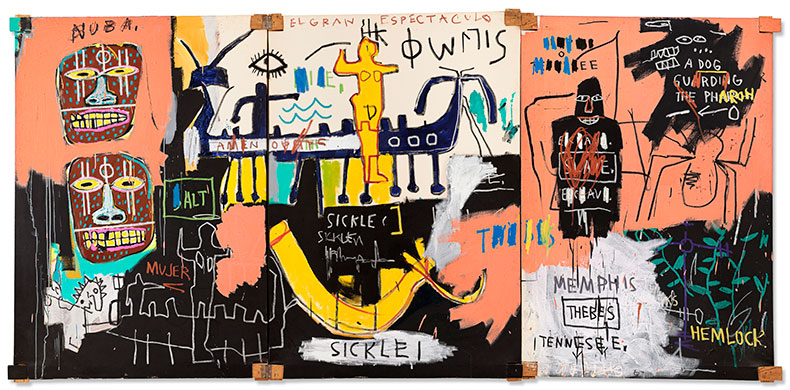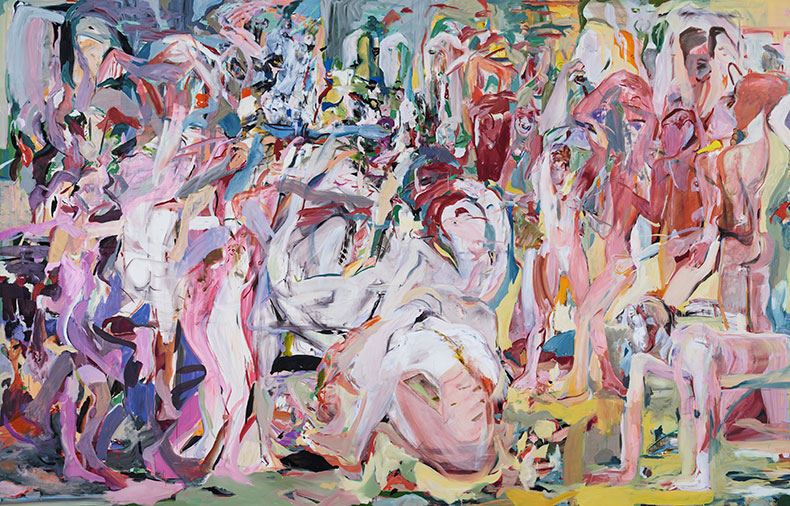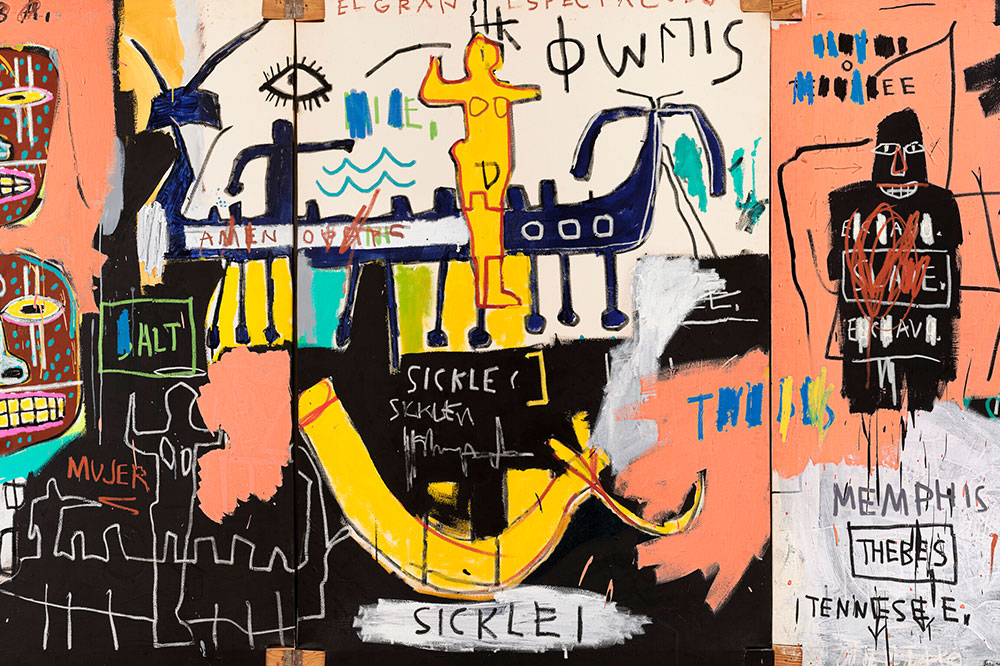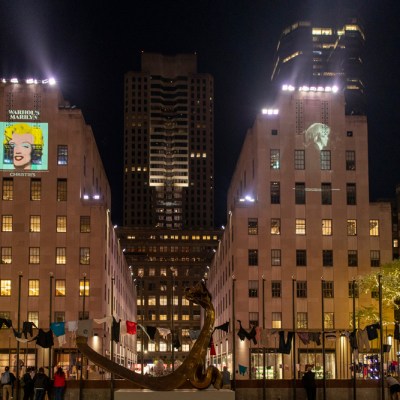You can’t help thinking it was co-ordinated. On 19 April, Christie’s announced that it was selling Jean-Michel Basquiat’s El Gran Espectaculo (The Nile) (1983), a monumental triptych nearly four metres wide, as a highlight of its spring sales in New York. Then, the next day, came a press release came from Sotheby’s revealing that it is also going big on Basquiat, with a vast homage to Charlie Parker, titled Now’s the Time (1985) after Parker’s album of 1945. With the former estimated at around $45m, and the latter ‘in excess of’ $30m, it’s no wonder that the May sales were dubbed the ‘battle of the Basquiats’.
There are plenty of other causes for excitement in this month’s New York sales – we dealt with some of the older works on offer here – but it’s worth dwelling on Basquiat for a moment. In some respects, the artist has never not been having a moment – his name has been synonymous with both the grit and the glamour of 1980s New York since that decade began. But it’s fair to say that, in recent years, his style has also come to embody a particular kind of luxury living. Perhaps it’s cynical to attribute the record-breaking attendance figures achieved by the Barbican’s 2018 survey, which seem likely to be repeated by the Beyeler’s Basquiat blockbuster this summer, to this factor alone. Undoubtedly, though, the auction houses have traded on it to great success – witness Untitled (1982), sold by Sotheby’s in 2017 for $110.5m to become (for five years) the most expensive painting by an American artist. The fashion mogul Valentino Garavani, current owner of The Nile, has also long been attuned to this aspect of Basquiat’s legacy; he had himself photographed in front of the painting in a Vanity Fair photoshoot of 2010.
El Gran Espectaculo (The Nile) (1983), Jean-Michel Basquiat. Christie’s (estimate $45m)

The painting itself shows the 23-year-old painter getting to grips, in his inimitable way, with the iconography of the African past. On the left-hand side, two Nubian-style masks appear under the scrawled rubric of ‘NUBA’. The eye of Ra hangs overhead; there’s Anubis (inscribed with the words ‘a dog guarding the pharaoh’) at far right, an inscrutable figure with ‘slave’ and ‘esclave’ scratched out, and below it the words ‘Memphis–Thebes–Tennessee’, tracing a direct pan-African lineage. In the middle of the painting, Osiris leads a boat down the river. As with so many of Basquiat’s best works, the painting both imposes itself on you as an undivided whole – a shock of colour and symbol – and encourages you to read it as a frieze.
Now’s the Time (1985), Jean-Michel Basquiat. Sotheby’s (estimate in excess of $30m)

Now’s the Time is a different proposition altogether. There’s no colour at all in this matte black circle, seven feet in circumference, with only a suggestion of the grooves of a record and the name of the Parker album inscribed sketchily in white. But as a homage to the importance of improvisatory jazz on the young artist – who was 25 when he painted it – it’s among the most significant statements of his brief career.
4096 Farben (1974), Gerhard Richter. Sotheby’s (estimate $18m–$25m)

Other highlights among the post-war and contemporary works on offer next week include, at Sotheby’s, Gerhard Richter’s 4096 Farben (1974) – among the most ambitious of his ‘Colour Chart’ series, it’s a work that (to contemporary viewers) anticipates the advent of pixels to an uncanny degree, and carries an estimate of $18m–$25m (Richter’s record still stands at $46.3m, achieved for Abstraktes Bild (1986) at Sotheby’s in 2015). And hot on the heels of her survey at the Met, Cecily Brown’s Untitled (The Beautiful and Damned) (2013) is up at Christie’s with an estimate of $5m–$7m. Presumably named after F. Scott Fitzgerald’s novel of 1922, the painting seems to be a form of laying bare – the great and the good dissolved by Brown’s sensual, abstract brushwork. As New York gears up for the biggest moment of the auction calendar this year, it seems as apt a warning as any against the evils of dissipation.
Untitled (The Beautiful and Damned) (2013), Cecily Brown. Christie’s (estimate $5m–$7m)




